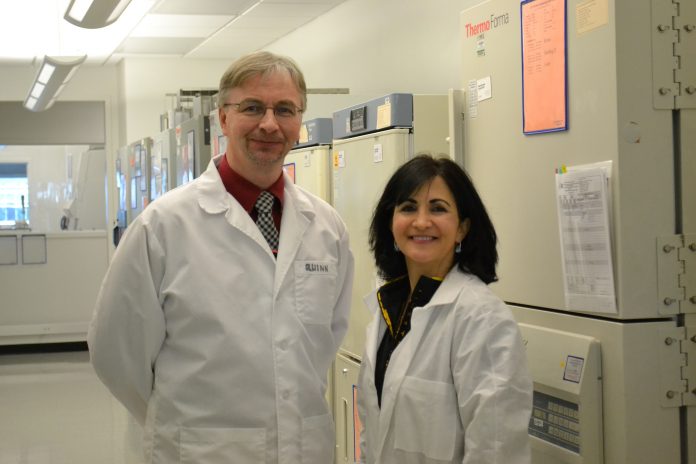The S-Lab programme aims to improve laboratory efficiency and effectiveness in all dimensions, including scientific value, resource efficiency and staff well-being. Director Peter James discusses the laboratory good practice and improvement ideas that that have emerged from the S-Lab award scheme and events.
Some laboratory equipment and consumables might be priced modestly, but in aggregate they can cost the sector billions of pounds to buy and use. Part of S-lab’s work focuses on improving opportunities to create efficiencies in using items that have low to medium unit purchase costs.
This supplements the emphasis of the Wakeham report (the research sector’s own efficiency review of 2010) and follow-on initiatives on high value equipment, especially vis-à-vis sharing. Sharing is one improvement method but there are others that have similar or greater potential, so it is important to examine all options holistically, with input from users, vendors, and procurement and facilities staff.
Equipment improvement methodology
We have run a series of inclusive workshops on autoclaves, chemicals, freezers and fridges, and ventilation and developed from them a generic STEM-equipment and consumables improvement methodology.
Here are the four key aspects of the methodology, taking cold storage as the application.
- Satisfy (genuine) needs – science and technology teaching and research must always have what they genuinely require but there is often scope for achieving desired outputs in different ways. For example, researchers want reliable and convenient cold storage but purchasing and managing their own freezers does not always achieve this. Many devices are energy inefficient, poorly utilised, badly maintained and at higher risk of content degradation due to poor resilience than users appreciate. Whilst many will prefer more incremental solutions to that adopted by the Roslin Institute – which has improved on all these parameters by centrally managing freezers and allocating shelves rather than complete units to researchers – it has established a benchmark for all.
- Track activities – one reason that cold storage improvement opportunities have been difficult to address is limited knowledge about their nature and scale. Only when samples are identified and monitored, for example, does it become clear whether they are still needed. Sample management systems also create additional benefits, including demonstrating regulatory compliance, and saving time and energy losses from door opening because samples can be easily located.
- Eliminate waste – with fridges and freezers the greatest waste is storage of samples that are no longer required. Good racking too can reduce the ‘waste’ of internal space not being fully utilised. Wastage of energy can also be avoided by measures such as ensuring that only energy efficient models are purchased (aided by a total cost of ownership basis for decisions), regular maintenance and other measures.
- Manage effectively – it is difficult to implement any of the preceding measures without good management, which includes a holistic approach to the issues, clear objectives and responsibilities, and standard operating procedures. This also makes it easier to address the important issue of resilience – vital in large life science institutes which will have hundreds of fridges and freezers, with an equipment replacement value of £500,000 or more, space and operating costs of £100,000 plus, and often priceless contents. (Best practice examples in the sector have often learnt the hard way and taken action as a result of sample losses).
The scope for applying a similar STEM approach to other equipment items, as well as chemicals, gases and other laboratory consumables, is also considerable, and will be explored in forthcoming S-Lab workshops focusing on specific categories.
Equipment Sharing 2.0
As noted by Adrian Cox in a previous blog, one common strand in many improvement actions is smarter data generation and use, including better integration of different IT systems. This is especially true of asset management, where many universities already have a number of systems which address different areas at different levels for different purposes.
For example: consortia platforms such as N8 for tracking and sharing high value equipment university or faculty level systems such as Kit-Catalogue to track, share and reuse a broad range of equipment.
Enhanced functionality (such as booking systems for accredited users), easier exchange of data with each other, and with other higher education systems, could create great benefit, and open up new opportunities such as linking building management systems data on humidity, temperature and other ambient factors to experimental records in ELNs.
New build and refurbishment
Laboratory new builds and refurbishments can also create a ‘step change’ to increase equipment efficiency and effectiveness, e.g. through shared facilities and reconfigured working practices.
There is also scope to reduce their cost and complexity by moving away from the norm of every laboratory as a bespoke project. Many pharma and schools laboratories are now based on standard design templates and ‘kit of parts’ fit-out solutions.
Ventilation – which accounts for a large proportion of laboratory operating cost and environmental impact – also has great potential for a more standardised approach, and broader use of the innovative technologies that have been developed in recent years.
It is clear that financial pressures, changing needs and other factors are requiring change in laboratories. The S-Lab Awards demonstrate both that many users, designers and others are rising to this challenge, and also that there is great scope for others to follow.
Peter James is director of the HEFCE-supported S-Lab: Supporting World Class Science initiative.








